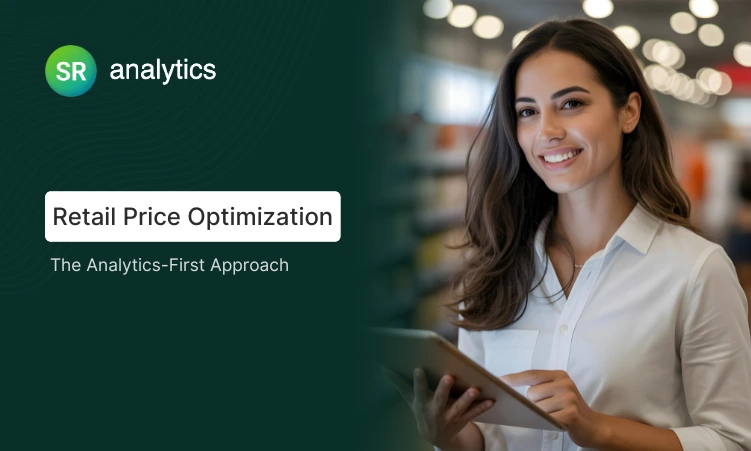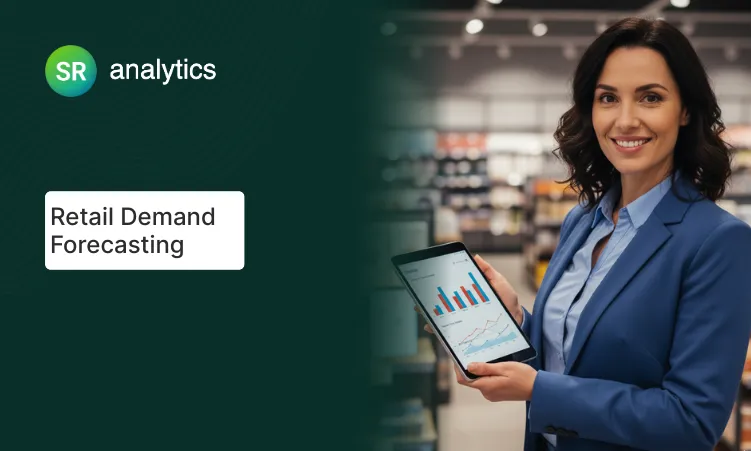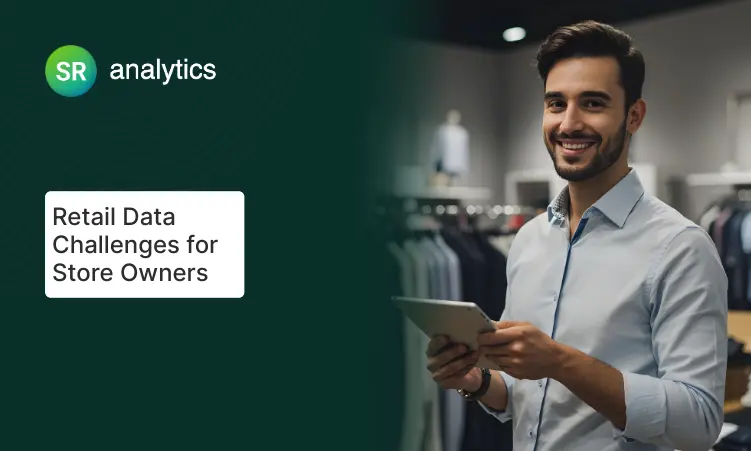Key Highlights
- Inventory analytics cuts stockouts 25% and boosts retail ecommerce sales 15% in six months
- Personalized segmentation generates 40% more revenue than generic campaigns
- Product recommendations drive 35% of total ecommerce retail sales revenue
- AI-powered dynamic pricing increases overall retail ecommerce revenue by 20%
- Site speed improvements of 1-second drive 2% conversion gains
- Real-time data integration enables proactive competitive advantages
AI Overview
Retail ecommerce analytics transform data into actionable insights driving sales growth. From demand forecasting to personalized marketing, these proven retail analytics use cases help ecommerce retail optimize inventory, boost conversions, and maximize revenue.
Introduction
Think of your data as untapped revenue sitting on the shelf. With the right analytics, you can turn it into real sales growth.
Here’s a sobering reality: While retail ecommerce sales are projected to hit $8 trillion by 2027, most online retailers are flying blind. They’re making critical decisions about inventory, pricing, and marketing based on gut feelings rather than data. The winners? They’re the ones who’ve cracked the code on turning their data into dollars.
What does retail analytics in ecommerce actually mean? Simply put, it’s using the data you’re already collecting – customer clicks, purchase patterns, inventory levels – to make smarter business decisions. Instead of guessing what customers want, when they’ll buy, or how much they’ll pay, you’ll know.
This guide covers five proven analytics use cases that drive higher sales:
- Demand forecasting and inventory optimization
- Customer segmentation and personalized marketing
- Product recommendations and cross-selling
- Pricing analytics and promotion optimization
- User experience optimization for better conversions

1. Demand Forecasting & Inventory Optimization
The Challenge: Predicting customer demand while preventing stockouts and overstock situations across multiple retail ecommerce channels and product lines in today’s competitive ecommerce retail environment.
The Solution: Advanced retail ecommerce analytics combines historical sales data, seasonality patterns, and market trends to create sophisticated forecasting models. Modern machine learning algorithms used in ecommerce retail operations analyze:
- Customer behavior patterns and purchase history across retail ecommerce platforms
- Marketing campaign impact and promotional effectiveness in ecommerce for retail
- External factors like search trends and seasonal variations affecting retail and ecommerce
- Real-time inventory levels across multiple ecommerce retail channels and warehouses
Real-World Impact: Our analytics team helped a leading retail ecommerce business achieve a 25% reduction in stockouts and 15% increase in online sales within six months. By unifying data from Shopify, Amazon, and ERP systems, they gained unprecedented visibility into retail ecommerce demand patterns. McKinsey’s research confirms that companies using predictive retail analytics use cases for inventory management see significant improvements in both ecommerce retail sales performance and operational efficiency.
2. Customer Segmentation & Personalized Marketing
The Challenge: Delivering relevant marketing messages to diverse customer bases with varying preferences, budgets, and shopping behaviors across multiple retail ecommerce touchpoints and ecommerce for retail platforms.
The Solution: Ecommerce retail analytics examines purchase history, browsing behavior, geographic data, and engagement patterns to identify distinct customer groups. Advanced platforms used in retail and ecommerce operations enable:
- RFM analysis (Recency, Frequency, Monetary) for ecommerce retail customer scoring
- Clustering algorithms to reveal hidden behavioral patterns in retail ecommerce data
- Dynamic content personalization across email and website for retail and ecommerce
- Targeted campaign deployment based on segment preferences in ecommerce retail
Real-World Impact: McKinsey research demonstrates that companies excelling at personalization generate 40% more revenue than their peers. One beauty ecommerce retail brand we worked with discovered through retail analytics use cases segmentation that first-time buyers respond to discounts while loyal customers value early access to new products—acting on these retail ecommerce insights doubled their email campaign conversion rates.
3. Product Recommendations & Cross-Selling Analytics
The Challenge: Increasing average order value and customer lifetime value by suggesting relevant products without overwhelming shoppers with irrelevant recommendations in competitive retail ecommerce environments.
The Solution: Analytics in retail and ecommerce powers recommendation engines that use multiple sophisticated approaches for ecommerce retail optimization:
- Collaborative filtering based on similar customer behaviors in retail ecommerce
- Content-based filtering using product attributes and features
- Market basket analysis to identify frequently paired items in ecommerce for retail
- Real-time personalization that adapts as customers browse retail and ecommerce sites
Real-World Impact: University of Florida research found recommendation systems boost overall sales by approximately 11% on average, while Amazon attributes an estimated 35% of their retail ecommerce sales to recommendation algorithms. One apparel retail ecommerce company saw email click-through rates jump 75% after implementing AI-powered personalized product suggestions using proven retail analytics use cases.
4. Dynamic Pricing & Promotion Optimization
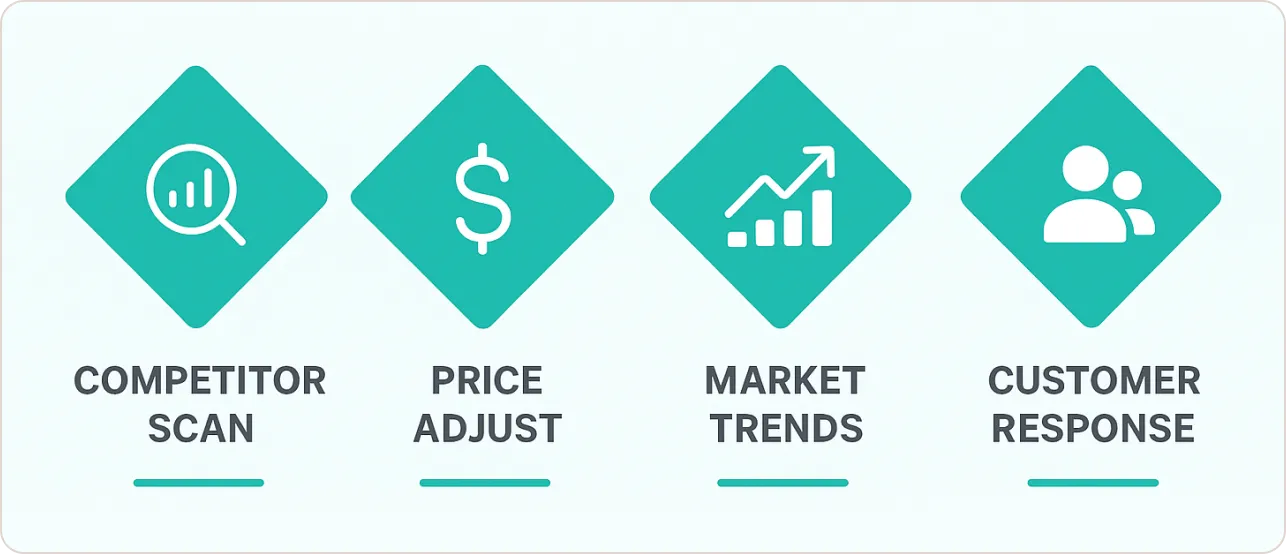
The Challenge: Setting optimal prices that maximize revenue while remaining competitive across multiple ecommerce retail channels and responding to real-time market conditions in the retail and ecommerce landscape.
The Solution: Retail ecommerce solutions incorporate multiple data sources and analytical approaches for ecommerce for retail optimization:
- Competitor price monitoring across different geographies in retail ecommerce
- Demand forecasting based on historical and seasonal patterns
- Customer response analysis to understand price sensitivity in ecommerce retail
- Real-time market condition adjustments and inventory considerations
Real-World Impact: McKinsey research shows that dynamic pricing plays a crucial role in boosting both consumer price perception and retailer profitability, with leading retail ecommerce companies seeing meaningful improvements in revenue and profit. Analytics distinguish between promotions generating incremental sales versus those cannibalizing full-price purchases, enabling ecommerce retail businesses to optimize promotional strategies using retail analytics use cases for maximum net revenue impact.
5. User Experience & Conversion Analytics
The Challenge: Identifying and eliminating friction points in the customer journey that cause cart abandonment and prevent conversions across devices and touchpoints in ecommerce for retail operations and retail ecommerce platforms.
The Solution: Ecommerce retail analytics uses comprehensive UX monitoring and optimization tools for retail and ecommerce success:
- Heatmap analysis showing click patterns and scroll behavior on retail ecommerce sites
- Funnel tracking to identify specific drop-off points in ecommerce retail journeys
- Performance monitoring for page speed and technical issues affecting retail ecommerce
- A/B testing capabilities for continuous optimization of ecommerce for retail experiences
Real-World Impact: Research consistently shows that 1-second page speed improvements can boost conversions by 2%, while mobile delays can reduce conversions by up to 20%. Even small UX improvements can translate to hundreds of thousands in additional sales—a conversion rate increase from 2% to 2.5% represents massive revenue gains for established retail ecommerce businesses using proven retail analytics use cases.
Traditional vs. Analytics-Driven Approach:
In my years of working with retail ecommerce businesses, I’ve seen this contrast play out countless times:
| Traditional Approach (What I See Too Often) | Analytics-Driven Approach (What I Recommend) |
|---|---|
| Inventory: Order based on last year’s sales and gut feeling | Inventory: Predict demand using ML algorithms that factor in trends, seasonality, and marketing campaigns |
| Marketing: Send the same email blast to everyone | Marketing: Segment customers and personalize messages based on behavior and preferences |
| Pricing: Check competitors and match or beat their prices | Pricing: Use dynamic pricing that responds to demand, inventory, and market conditions |
| Product Recommendations: Show “bestsellers” or random products | Product Recommendations: Use AI to suggest products customers actually want to buy |
| UX Decisions: Guess what’s wrong when sales drop | UX Decisions: Use heatmaps and funnel analysis to pinpoint exactly where customers get stuck |
The result? Traditional retailers react to problems after they happen. Analytics-driven retailers prevent them before they start. I’ve witnessed this transformation dozens of times.
Getting Started: My Implementation Roadmap for Retail Analytics
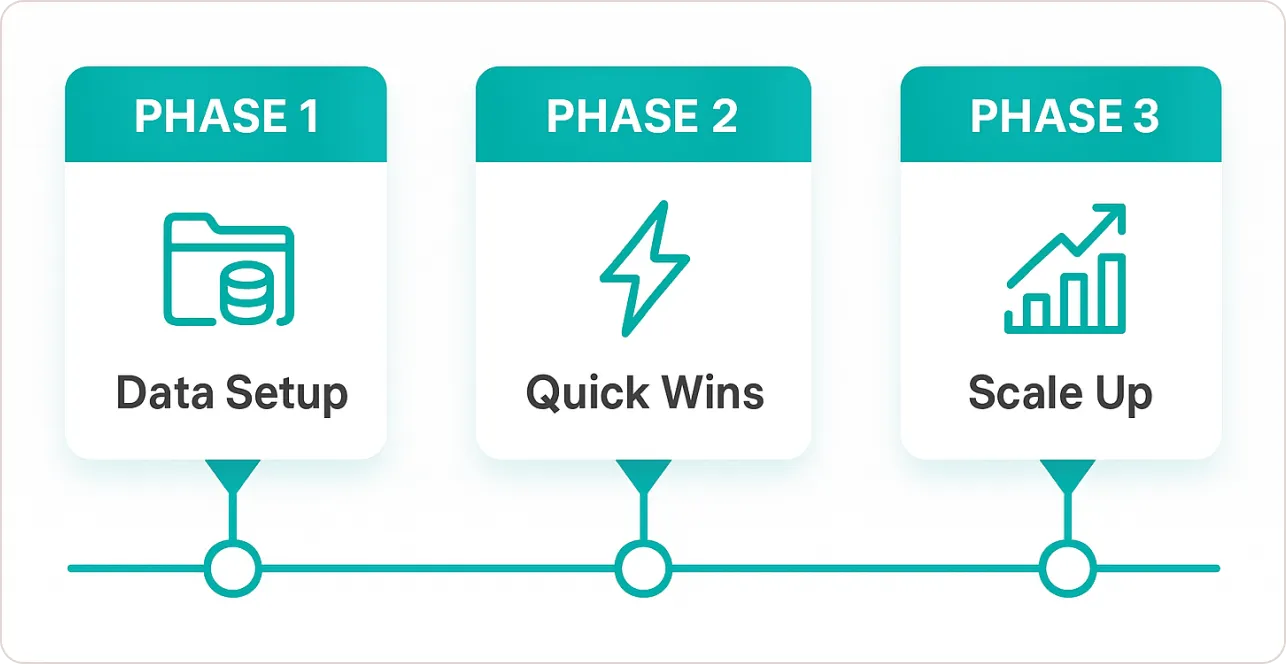
After implementing retail analytics for countless ecommerce businesses, here’s the strategic approach I recommend that delivers measurable results:
Phase 1: Data Foundation & Assessment
- Audit your current data sources – I help identify what customer, sales, and operational data you’re currently collecting across retail ecommerce platforms
- Evaluate data quality – I ensure accuracy, completeness, and consistency across all retail and ecommerce systems
- Map data integration points – I connect Shopify, Google Analytics, advertising platforms, and inventory systems for comprehensive visibility
- Establish data governance – I create protocols for data collection, storage, and access control
Professional Data Analytics Services can accelerate this foundation phase significantly, ensuring you start with clean, integrated data from day one.
Phase 2: Quick Wins & Pilot Programs
- Start with high-impact retail analytics use cases – I focus on areas causing immediate pain points like stockouts or low conversion rates
- Implement basic analytics dashboards – I create visibility into key performance metrics across channels
- Set up automated alerts – I configure notifications when important metrics exceed normal thresholds
- Begin A/B testing programs – I help test personalization strategies and UX improvements systematically
Phase 3: Advanced Analytics & Scaling
- Deploy predictive models – I implement demand forecasting and customer lifetime value analytics
- Integrate AI-powered recommendations – I launch personalized product suggestion engines
- Optimize pricing strategies – I use dynamic pricing based on market conditions and demand patterns
- Expand cross-channel analytics – I unify online and offline data for comprehensive customer insights
In my experience, the key to success lies in starting with solid data foundations while focusing on retail analytics use cases that directly impact revenue. I typically see businesses achieve initial improvements within 90 days of implementation.
Real-World Success: 25% Stockout Reduction Case Study
SR Analytics recently transformed operations for a leading outdoor recreation retail ecommerce company struggling with fragmented data across Shopify, GA4, Google Ads, Amazon Vendor Central, and Netsuite.
Our Solution: We consolidated all ecommerce retail platforms into a unified Snowflake data warehouse with custom BI dashboards for real-time sales, marketing, and inventory analytics across retail and ecommerce operations.
Results Achieved:
- 25% reduction in stockouts through predictive inventory management for retail ecommerce
- 15% increase in online sales within six months across ecommerce for retail channels
- 20% improvement in marketing ROI via optimized ad spend for retail ecommerce campaigns
Read the complete case study for detailed implementation strategies and performance metrics.
The Future of Data-Driven Commerce
Here’s the reality: By 2026, AI will be handling most pricing decisions and predicting customer behavior with scary accuracy. The retailers who start building their analytics foundation now will have a massive head start.
But you don’t need to wait. The tools I’ve covered are available today. While your competitors are guessing, you could be knowing. While they’re reacting to problems, you could be preventing them.




